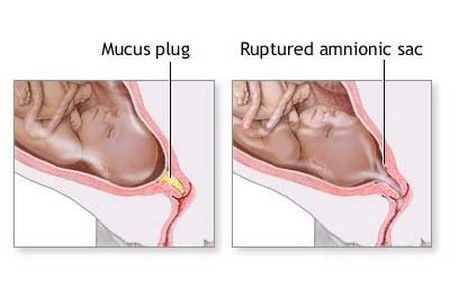Best Way to Examine for Cervical Changes during Pregnancy
Your doctor or midwife will perform an internal examination of your cervix to see if it has begun changing. The cervix is measured for length, thickness, and dilatation. He or she can feel your cervix by inserting two fingers of a gloved hand into your vagina. Some doctors view the dilation of the cervix using a speculum, the device used to open the vaginal walls during a pap smear. Neither method of examination is painful, but they can be a little uncomfortable. A vaginal sonogram, similar to an abdominal sonogram, is another way to evaluate the cervix. For this, a tampon-shaped probe is inserted into the vagina. Using sound waves, it transmits an image to a monitor resembling a television.
Persistent contractions usually cause the cervix to soften, shorten, and open up. These changes are also called effacement and dilatation. If your cervix has begun to change significantly, especially in dilating (or opening up), it will not close back up again. Progressive dilatation of the cervix caused by persistent contractions will eventually result in the birth of your baby.
 The goal in preterm labor management is to keep the uterus calm— with few contractions, so irreversible changes to the cervix do not occur.
The goal in preterm labor management is to keep the uterus calm— with few contractions, so irreversible changes to the cervix do not occur.
The cervical conditions include:
Softening Cervix
If you put your finger on the tip of your nose, you can feel hardness and a tiny space between the cartilage sections of your nose. This is how your cervix should feel to your doctor or midwife—firm and yet movable. A softening cervix means this firmness goes away. For most women the cervix is usually six to seven centimeters long. As your pregnancy progresses, your cervix begins to shorten very slowly. Significant shortening doesn’t usually occur until the last few weeks of the last trimester, unless you’re experiencing preterm labor. A measurement of less than 3.0 centimeters is considered significant shortening.
Effacing Cervix
Not only is the cervix usually very long, it’s also thick. When the uterus begins to have contractions, the walls of the cervix thin out. This is called effacement. The amount of effacement or thinning is reported in percentages. Usually 20 to 30 percent effacemint is considered a minor change, while 50 percent effacement is a clear indication of a cervix preparing for birth. At 100 percent effacement, the cervix is “paper thin” and the birth of the baby is near.
Cervical Os
The size of the opening of the cervix, the os, tells the midwife, doctor, or obstetrical nurse how far along labor is. The size of the opening is measured in centimeters. When the os is 10 centimeters wide, the cervix is completely dilated. This occurs just prior to the birth of the baby.
The cervix has two openings, the external os and the internal os. Normally the external os opens slowly late in the third trimester. If the external os is opening earlier, preterm labor may be imminent. When the internal os also prematurely starts to open, this is a warning signal of early delivery.
Low Uterine Segment
Development of the low uterine segment means the lower part of the uterus thins, stretches out, and begins to fill the upper third of the vagina. The baby’s head – or feet or buttocks, if breech – is preparing to descend into the lower part of the uterus.
When the cervix is one centimeter dilated, or more, and you’re more than three weeks from your due date, you are having what’s called “preterm cervical change.”
All of these changes to the cervix and vaginal area are indicators of your body’s preparation for birth. If you’re exhibiting these cervical changes, you may be sent to a hospital for further evaluation and treatment.
Categories
Advertisements
Recent Articles
 How to Understand Bed Sizes – A Small Guide
How to Understand Bed Sizes – A Small Guide How to Select Some Must Have Kitchen Accessories
How to Select Some Must Have Kitchen Accessories Best Way to Change a Car Tire
Best Way to Change a Car Tire Best Way to Write an Affirmation
Best Way to Write an Affirmation Best Way to Take Charge of Your Financial Life
Best Way to Take Charge of Your Financial Life Best Way to Survive a Party When You Don’t Know Anyone
Best Way to Survive a Party When You Don’t Know Anyone Best Way to Stop Self Sabotaging Yourself
Best Way to Stop Self Sabotaging Yourself Best Way to Start Journal Writing
Best Way to Start Journal Writing Best Way to Speak with a Powerful Voice
Best Way to Speak with a Powerful Voice Best Way to Simplify Your Life
Best Way to Simplify Your Life Best Way to Respond to a Put-Down
Best Way to Respond to a Put-Down Best Way to Reduce Acne Breakouts
Best Way to Reduce Acne Breakouts Best Way to Recover from Dining Disasters
Best Way to Recover from Dining Disasters Best Way to Quit Your Job Gracefully
Best Way to Quit Your Job Gracefully Best Way to Make Your Own Website
Best Way to Make Your Own Website


Leave a Reply